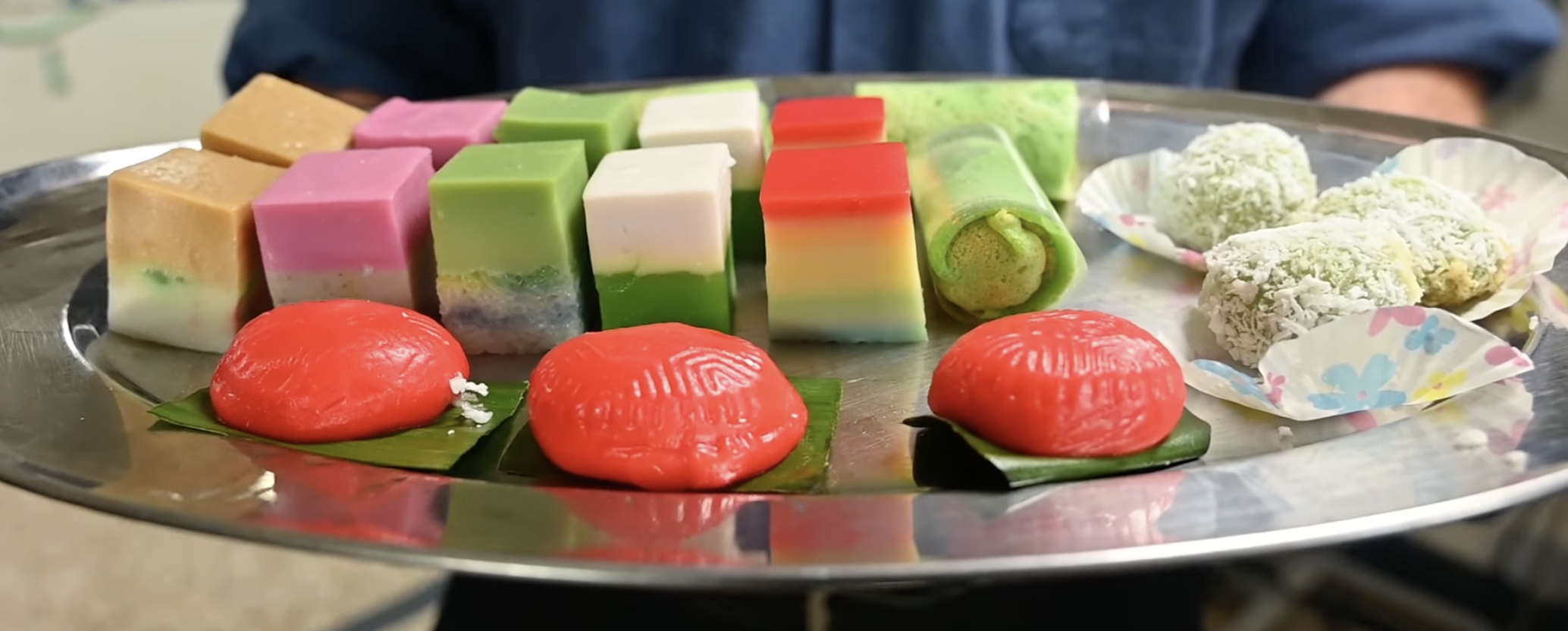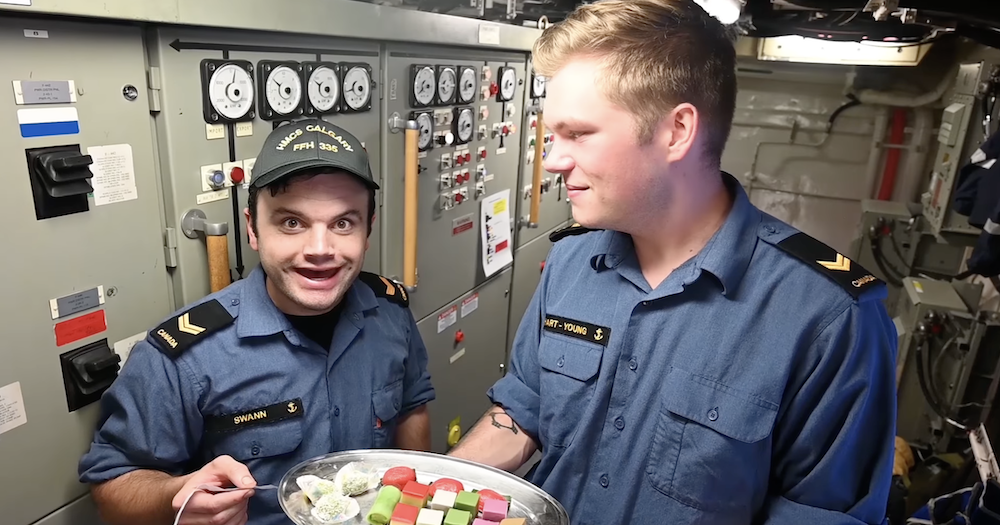Follow us on Telegram for the latest updates: https://t.me/mothershipsg
A group of Canadian sailors got to have a taste of Singapore's diverse food culture while they docked at Changi Naval Base last week (Apr 4-6).
They were onboard the Her Majesty's National Ship (HMCS) Calgary, a Canadian warship.
The crew, who were unable to disembark due to the ongoing Covid-19 situation, were filmed trying and then reacting to Singapore's traditional desserts – kueh.
"What is 'Kueh'?"
Hosted by sailor first class Hart Young, the one-minute long video saw Young bringing an assortment of kueh around for his crewmates to try.
Opined Young, "Not sure what's in it, but it sure looks delicious!"From the video, popular favourites, including the likes of Ang Ku Kueh (with peanuts and mung bean), Rainbow Kueh Lapis, Ondeh Ondeh, and Kueh Dadar, were offered up for hot takes from the crew.
 Image via HMCS Calgary/NCSM Calgary Facebook
Image via HMCS Calgary/NCSM Calgary Facebook
Crew reactions
For the most part, the kuehs gained favourable reviews from the Canadians.
Comments ranged from "That's delicious", to "Very good, very creamy", with more than one complimenting the various kuehs' gelatinous texture.
 Image via HMCS Calgary/NCSM Calgary Facebook
Image via HMCS Calgary/NCSM Calgary Facebook
One crewmate reacted the way we've all responded to Ondeh Ondeh eating it for the first time, nearly doing a spit-take after it burst in his mouth.
 Image via HMCS Calgary/NCSM Calgary Facebook
Image via HMCS Calgary/NCSM Calgary Facebook
He said while laughing, "It just exploded. It was tasty, once I got over the initial surprise."
The history of kueh
Kueh is typically generic terminology for any snacks or finger food that is mostly sweet, sometimes savoury, according to a previous Mothership video.
While kueh has become almost synonymous to Peranakan culture today, there are other types of kueh that also represent Singapore's "fusion" food culture, such as the Malay and Indian kuehs (think Ondeh Ondeh and Putu Mayam).
According to the Singapore Tatler, the origins of the kueh extend across borders, as it has been made by the Malays, Chinese, Peranakans and Eurasians for generations.
While kuehs' used to have a history of mainly being eaten during celebrations and festivities, nowadays, they are an "everyday snack", enjoyed during any time of the day.
Top image via HMCS Calgary/NCSM Calgary Facebook
If you like what you read, follow us on Facebook, Instagram, Twitter and Telegram to get the latest updates.
